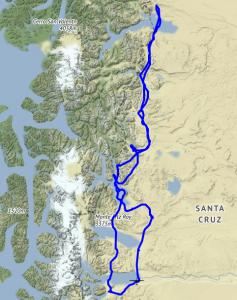
Hola a todos! Greetings from the DLR Patagonia Wave Soaring Team from El Calafate! The last couple days we had fantastic wave conditions and our glider pilots flew each day and gathered many hours of measurement data. I had the chance to participate in some of these flights and this campaign insight is about the 10 h flight we made on the 25.09.2019 which almost ended on a dirt road out in the middle of nowhere.
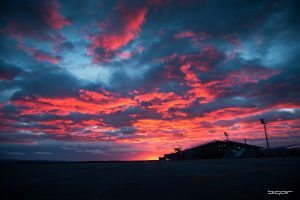
At 5:50 am my alarm goes off. A short glimpse out of the window shows some lenticularis clouds but it´s still dark outside. Let´s get ready… A short breakfast and off we head to the airport. As we pass security control with two bottles of oxygen, we are observed curiously by the passengers. I wait until the pilots have submitted their flight plan. I´m wearing ski underwear, warm pants and two down jackets, Klaus told me to dress warm but in this moment inside the airport it´s just way too hot. I´m happy as we go over the apron to the gliders, two Stemme V10 – VT. The Stemme is a self-launching motor glider with a folding propeller which is stowed away in the aircraft´s nose-cone when the engine is not in use. The ability to use the motor in flight is very useful when weather conditions change during a long distance flight. This makes the Stemme an appropriate glider for this research project.
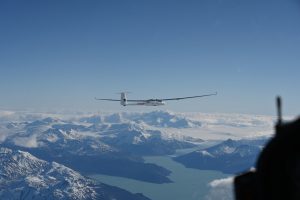
Thomas and Klaus get their gliders ready. We aim for a kind of tandem flight where both motor gliders stay close together. Klaus will lead and Thomas is following him. Before take-off, I get a briefing concerning some important topics. As we plan to fly up to 6000 m altitude, it is necessary to use additional oxygen to prevent hypoxia. We use a redundant Pulse-Demand Oxygen System consisting of a small cannula which is connected via a tube to the flow control device (EDS), the pressure regulator and the oxygen bottle. At the beginning of each inhalation, the EDS provides a measured pulse of oxygen through the cannula which is attached to the nose.
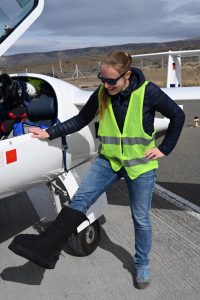
I receive a pair of special shoes to keep my feet warm as usual shoes won´t do the job. On my last flight we had up to -35 °C outside air temperature. Last but not least Thomas explains to me what I need to do if I have to use the parachute. Well, I hope I don´t need to remember that today…
Inside the glider two people sit next to each other and there is not too much space. Thomas is busy communicating with the tower. I´m excited and looking forward to the flight. We roll to the runway and within a few seconds we´re airborne. The glider gains height quickly and passes over El Calafate towards the mountains. The plan is to fly north for a few hours and then return to the airport. After 25 min Klaus finds lift and both gliders turn off the motor. Our first wave brings us up to an altitude of 4000 m, enough to glide over the turquoise blue Lago Argentino to find the next lift east of the mountains south of Lago Viedma. The lift is very smooth, in the beginning sometimes a little bumpy but the feeling to fly, actually surf up a lenticularis cloud is extraordinary.
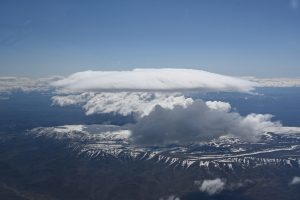
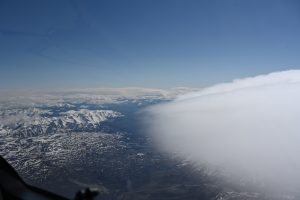
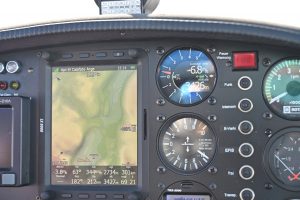
Thomas brings the glider up to 6000 m. The EDS is supplying us with oxygen and the temperatures get lower the higher we get. On the canopy over us some hoarfrost is visible. We fly from one wave spot to the next, trying to find mountain waves which provide lift and glide further north. But wave flying is not just about gaining height, it´s as well about avoiding sink and finding efficient lines. Between some wave spots we fly fast through areas with sinking air. Clouds are growing next to us, their shape and colors are constantly changing, the mountains are covered with snow. From time to time, the Southern Patagonian Ice Field is visible through the clouds, with its massive glaciers which are reaching down into the valleys forming lakes. And there are many lakes.
Video: The beeping sound indicates the climb / sink rate and and the EDS is supplying oxygen
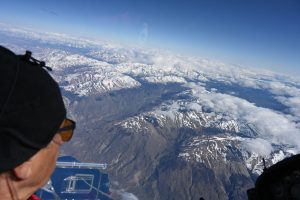
At the Lago Buenos Aires Klaus decides to turn around as there is no permission for Thomas to fly further north. It´s 2 pm, let´s head back! The return path on our northbound leg still works and it is possible to gain height at the same spots. East of O´Higgins we get quite low to 2200 m but find lift which brings us up to 6000 m in 20 minutes. Gradually, the weather is changing and we face more southerly winds at the end of our flight. East of Lago San Martin, Klaus struggles to find lift.
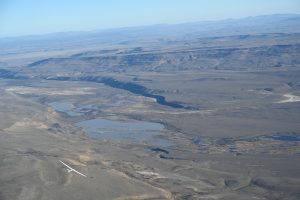
We get lower and lower and I notice that Thomas is getting more focused. We scan the ground for a possible landing field. There is a dirt road, possibly sandy which could be used for landing but the sand would make it impossible to take-off again… At one point, both pilots decide to preheat the motor but this takes some time. Meanwhile, they try to maintain height at a ridge which delivers very little lift. I´m relieved as both motors start as this is a critical point. But we are still waiting for the oil pressure and temperature to rise and there is not much height between us and the ground left. Slowly both needles rise and Thomas can finally turn on the motor. Puhhh… The last part of the flight we fly with motor. After more than 10 h, we´re back in El Calafate! What a flight 🙂
———————————————————————————————————————–
This series of Soaring Campaign Insights is written during the DLR Patagonia Wave Soaring campaign in El Calafate, Argentina in Sep/Oct 2019. The measurement campaign coincides with and supports the SOUTHTRAC campaign in Rio Grande, Argentina. The intention of this article is to give insights into this measurement campaign from the perspective of a student.
It is written by me, Ramona, aerospace master student at the DLR Institute of Atmospheric Physics (IPA).
